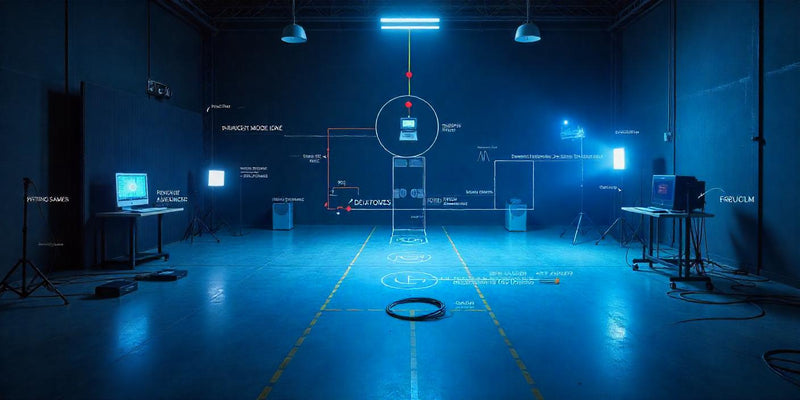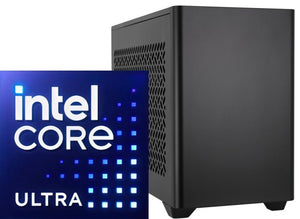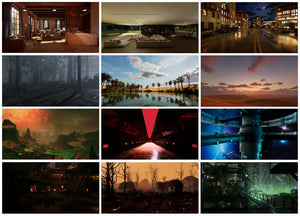Virtual Production Camera Tracking System Basics

Modern filmmaking has transformed dramatically through advanced technology that bridges physical and digital worlds. Virtual production camera tracking represents one of the most critical innovations reshaping how directors, cinematographers, and visual effects teams create compelling content. This sophisticated technology enables real-time synchronization between physical cameras and digital environments, allowing filmmakers to see final composite shots during filming rather than waiting for post-production.
The integration of precise camera tracking systems into virtual production workflows has revolutionized everything from pre-visualization to final shot creation. Productions can now blend live-action footage with computer-generated imagery seamlessly, creating immersive experiences that were previously impossible or prohibitively expensive to achieve.
Understanding Virtual Production Camera Tracking Technology
Virtual production camera tracking forms the technological backbone of modern digital filmmaking, enabling precise coordination between physical camera movements and virtual environments. This system continuously monitors camera position, orientation, and movement in three-dimensional space, translating this data into corresponding adjustments within digital scenes.
The technology operates through sophisticated sensor networks that capture camera motion data at incredibly high frequencies, often exceeding 120 frames per second. This real-time data processing ensures that virtual backgrounds, digital characters, and computer-generated elements remain perfectly aligned with live-action footage throughout filming.
Professional camera tracking systems utilize multiple tracking methodologies working in concert. Optical tracking employs strategically placed markers or LED arrays that specialized cameras monitor continuously. Inertial measurement units provide additional motion data through accelerometers and gyroscopes, while magnetic tracking systems offer supplementary positioning information in controlled environments.
The sophistication of modern motion tracking technology allows for sub-millimeter accuracy in camera position detection. This precision proves essential for maintaining visual consistency between practical and digital elements, particularly in shots requiring complex camera movements or close-up detail work.
Essential Hardware Components for Camera Tracking Systems
Successful virtual production relies on carefully selected virtual production hardware components that work together to create seamless tracking performance. The foundation begins with high-precision tracking cameras positioned strategically around the filming environment to maintain continuous sight lines with tracking targets.
Professional tracking markers come in various forms, from passive reflective spheres to active LED arrays. Each type serves specific production needs – passive markers work excellently in controlled lighting conditions, while active LED systems provide superior performance in challenging lighting environments or outdoor shoots.
Inertial measurement units attach directly to cameras, providing crucial motion data that supplements optical tracking information. These compact devices measure acceleration, rotation, and magnetic orientation, delivering essential backup data when optical tracking faces temporary occlusion or interference.
Central processing units coordinate all tracking data streams, performing complex calculations that translate raw sensor information into usable camera position data. These systems require substantial computational power to process multiple data streams simultaneously while maintaining real-time performance standards.
High-speed networking infrastructure connects all system components, ensuring tracking data reaches rendering engines without latency that could compromise real-time visualization. Professional installations typically employ dedicated fiber optic networks to guarantee consistent, high-bandwidth data transmission.

Real-Time Tracking Solutions for Modern Productions
Contemporary tracking solutions prioritize real-time performance that keeps pace with demanding production schedules. These systems must deliver instantaneous feedback to camera operators, directors, and visual effects supervisors while maintaining tracking accuracy under diverse shooting conditions.
Advanced real-time tracking systems employ predictive algorithms that anticipate camera movement patterns, reducing latency between physical camera motion and virtual environment updates. This predictive processing proves particularly valuable during rapid camera movements or complex choreographed sequences.
Multi-camera tracking capabilities allow productions to monitor several cameras simultaneously, each with independent tracking data streams. This functionality supports complex multi-camera setups common in high-end productions while maintaining individual tracking precision for each camera unit.
Wireless tracking solutions eliminate cable constraints that traditionally limited camera movement range. Modern wireless systems provide rock-solid connectivity with minimal latency, giving camera operators complete freedom of movement throughout production environments.
Integration with popular digital content creation software ensures tracking data seamlessly flows into established post-production workflows. Professional tracking systems support industry-standard formats and protocols, making them compatible with existing production pipelines without requiring wholesale workflow changes.
Implementation Strategies for Different Production Scales
Small-scale productions benefit from streamlined tracking setups that balance performance with budget considerations. Entry-level systems focus on essential tracking functionality while maintaining professional accuracy standards suitable for commercial, documentary, or independent film work.
Mid-scale productions often require expanded tracking coverage areas and multiple camera support. These implementations typically involve more sophisticated hardware configurations with redundant tracking methodologies to ensure continuous operation during extended shooting schedules.
Large-scale studio productions demand comprehensive tracking solutions capable of covering expansive stages with multiple simultaneous camera units. These installations require extensive infrastructure planning, including permanent marker placement, dedicated control rooms, and high-capacity networking systems.
Location-based shoots present unique challenges requiring portable tracking solutions that maintain accuracy across diverse environments. Mobile tracking systems must adapt quickly to varying lighting conditions, space constraints, and environmental factors while delivering consistent performance.
Troubleshooting Common Camera Tracking Issues
Tracking accuracy problems often stem from inadequate marker visibility or environmental interference. Regular marker cleaning and strategic lighting adjustments typically resolve most visibility-related tracking issues. Backup tracking methodologies provide continuity when primary systems encounter temporary difficulties.
Latency issues can disrupt real-time visualization, affecting director and operator confidence during filming. Network optimization, processing power upgrades, and software configuration adjustments usually address latency concerns effectively.
Calibration drift occurs gradually over extended shooting periods, requiring periodic recalibration to maintain tracking precision. Established calibration schedules and automated drift detection systems help prevent accuracy degradation before it impacts production quality.
Environmental factors like reflective surfaces, bright lights, or electromagnetic interference can disrupt tracking performance. Site surveys and environmental preparation help identify potential issues before they affect production schedules.
Integration with Virtual Production Workflows
Camera tracking data integrates seamlessly with virtual production pipelines through standardized protocols and file formats. This integration enables real-time compositing, live preview capabilities, and immediate creative decision-making during filming rather than post-production.
Pre-visualization benefits significantly from accurate camera tracking, allowing directors to plan complex shots and visualize final results before committing to expensive filming schedules. Virtual scouting using tracked cameras helps identify potential issues and optimize shot planning.
On-set visualization provides immediate feedback to creative teams, enabling real-time adjustments to lighting, camera angles, and performance elements. This immediate feedback capability reduces expensive reshoots and post-production corrections.
Post-production workflows leverage tracking data to accelerate compositing and visual effects work. Accurate camera movement data eliminates time-consuming manual tracking processes while ensuring perfect alignment between live-action and digital elements.

Future Developments in Camera Tracking Technology
Artificial intelligence integration promises to enhance tracking accuracy and reduce setup complexity. Machine learning algorithms can optimize tracking parameters automatically and predict optimal marker placement for specific shooting scenarios.
Miniaturization trends continue reducing tracking hardware size and weight, making systems less intrusive to camera operation while maintaining or improving tracking precision.
Cloud-based processing capabilities enable remote tracking data analysis and real-time collaboration between geographically distributed production teams. This connectivity supports global production workflows and remote supervision capabilities.
Enhanced sensor fusion combines multiple tracking methodologies more effectively, creating robust systems that maintain accuracy even when individual tracking methods encounter temporary limitations.
Conclusion
Virtual production camera tracking technology has fundamentally transformed modern filmmaking by enabling real-time integration of physical and digital production elements. The sophisticated camera tracking systems available today provide filmmakers with unprecedented creative control and immediate visual feedback during production.
The evolution of motion tracking technology continues to push boundaries, offering increasingly accurate, reliable, and user-friendly solutions for productions of all scales. From independent filmmakers to major studio productions, these systems have become essential tools for creating compelling visual content efficiently and cost-effectively.
Success with virtual production camera tracking requires careful planning, appropriate hardware selection, and thorough understanding of system capabilities and limitations. Productions that invest time in proper system setup and crew training consistently achieve superior results while maintaining efficient production schedules.
The future of camera tracking technology promises even greater integration with artificial intelligence, cloud computing, and advanced sensor technologies. These developments will continue expanding creative possibilities while simplifying technical implementation for production teams worldwide.
Frequently Asked Questions
What is virtual production camera tracking and how does it work?
Virtual production camera tracking is a technology that monitors the precise position and movement of cameras in three-dimensional space during filming. The system uses sensors, markers, and specialized software to track camera motion in real-time, allowing digital environments and virtual elements to move and respond accurately to camera movements. This creates seamless integration between live-action footage and computer-generated imagery during filming rather than in post-production.
What hardware do I need for a basic camera tracking setup?
A basic camera tracking system requires tracking cameras positioned around your filming area, tracking markers (either passive reflective or active LED), inertial measurement units that attach to your camera, a central processing computer with tracking software, and high-speed network connections. The specific hardware needs depend on your production scale, accuracy requirements, and filming environment conditions.
How accurate are modern camera tracking systems?
Professional motion tracking technology can achieve sub-millimeter accuracy in ideal conditions. Most commercial systems provide accuracy within 1-2 millimeters for position tracking and less than 0.1 degrees for rotational tracking. Accuracy depends on factors like marker placement, environmental conditions, calibration quality, and the specific tracking system used.
Can camera tracking work with multiple cameras simultaneously?
Yes, advanced tracking solutions support multiple cameras operating simultaneously, each with independent tracking data streams. Professional systems can track dozens of cameras concurrently while maintaining individual accuracy for each unit. This capability is essential for multi-camera productions and complex shooting scenarios.
What are the main challenges when implementing camera tracking?
Common challenges include maintaining marker visibility throughout camera movements, managing tracking latency for real-time tracking applications, dealing with environmental interference like reflective surfaces or bright lights, ensuring proper system calibration, and integrating tracking data with existing production workflows. Most challenges can be addressed through proper planning, equipment selection, and crew training.
How much does a professional camera tracking system cost?
Professional camera tracking systems range from $50,000 to $500,000+ depending on capabilities, coverage area, and accuracy requirements. Entry-level systems suitable for smaller productions start around $20,000, while high-end systems for major studio productions can exceed $1 million including installation and integration costs.
Do I need special training to operate camera tracking systems?
While basic operation can be learned relatively quickly, professional implementation requires specialized training in system setup, calibration procedures, troubleshooting, and integration with production workflows. Most manufacturers provide training programs, and several specialized schools offer certification courses in virtual production technologies.
How does camera tracking integrate with existing production workflows?
Modern virtual production hardware integrates with popular digital content creation software through industry-standard protocols and file formats. Tracking data flows seamlessly into established post-production pipelines, often accelerating rather than complicating existing workflows. The integration typically enhances rather than replaces existing production processes.




